Imagine transforming your backyard into a cozy sanctuary, where the crackle of a wood fire under the stars draws laughter and stories. Building an outdoor fireplace is an evocative project, each brick layered with potential for warmth and communal joy.
In this article, I’ll unveil the secrets to constructing a durable, beautiful focal point in your outdoor living space that not only elevates your property value but also enriches your quality of life.
By the end of this guide, you will master the essential steps — from selecting fire-resistant materials to understanding local building codes.
I will navigate you through safety regulations and optimal ventilation systems to ensure your fireplace is both safe and enjoyable.
Whether you’re a seasoned DIY enthusiast or a novice in home projects, this journey into the realm of fireplace construction techniques and outdoor decor promises to equip you with all you need to create your own backyard retreat.
How to build an outdoor fireplace: The basic steps
- Check Local Codes: Ensure compliance with State, Local, or HOA codes and restrictions, including clearance requirements and spark arrestors
- Develop A Plan of Action: Assess space, decide on wood or gas logs, and plan for chimney clearance
- Build Your Foundation: Prepare a solid foundation, then construct the base and firebox using firebrick and refractory cement
- Add the Finishing Touches: Build the flue, set stone veneer, and complete the structure with mortar and stone placement
And a supporting video:
Be the envy of the neighborhood with a DIY fireplace
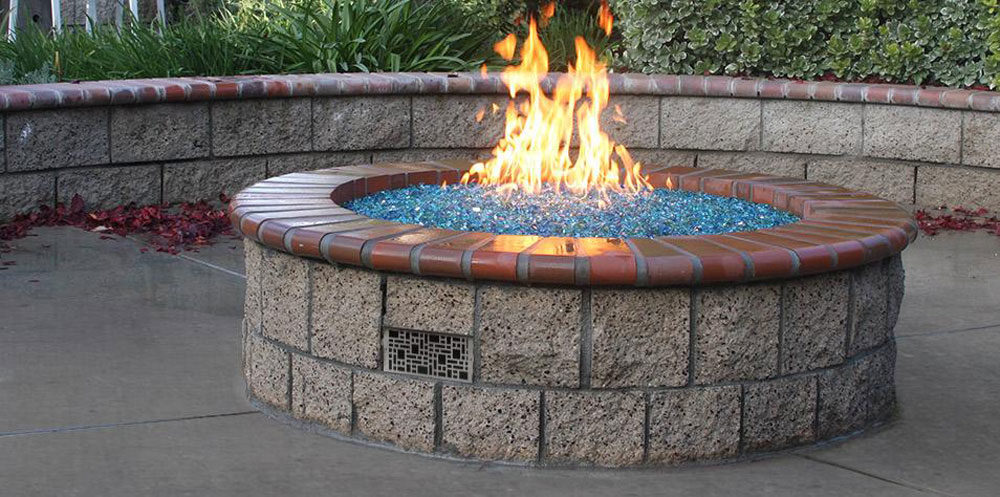
To create an avant-garde backyard patio, a small campfire should not be missing. However, as with other furnishings that involve the use of fire, there are some rules to follow to get the most out of it while maintaining safety.
When you think of campfires, the first thing that comes to mind is a gathering of family and friends around the fire. With this mental image, you should start to think about a few things. The fire pit should be centrally located, away from other buildings or vegetation, but not so far from places like toilets or kitchens.
Still, remember that you should check with your local entities what the regulations are for the job. They can better guide you through the placement process.

Considering your outdoor space, it is time to decide if you want to make a custom fire pit or if you prefer to purchase fireplace kits. Although construction is not difficult, the work can be cumbersome and time-consuming.
You should consider whether you are capable of doing it on your own or if it is best to check some fireplace kits. Outdoor fireplaces could be nice DIY, but you will need the right tools.
Finally, after analyzing the security elements, the last thing to consider is the aesthetic aspect. We know that all this information can be difficult to digest, so below we leave you tips and steps so that you know how to build an outdoor fireplace.
How to build an outdoor fireplace step by step
Everything must be properly planned for the project to be a success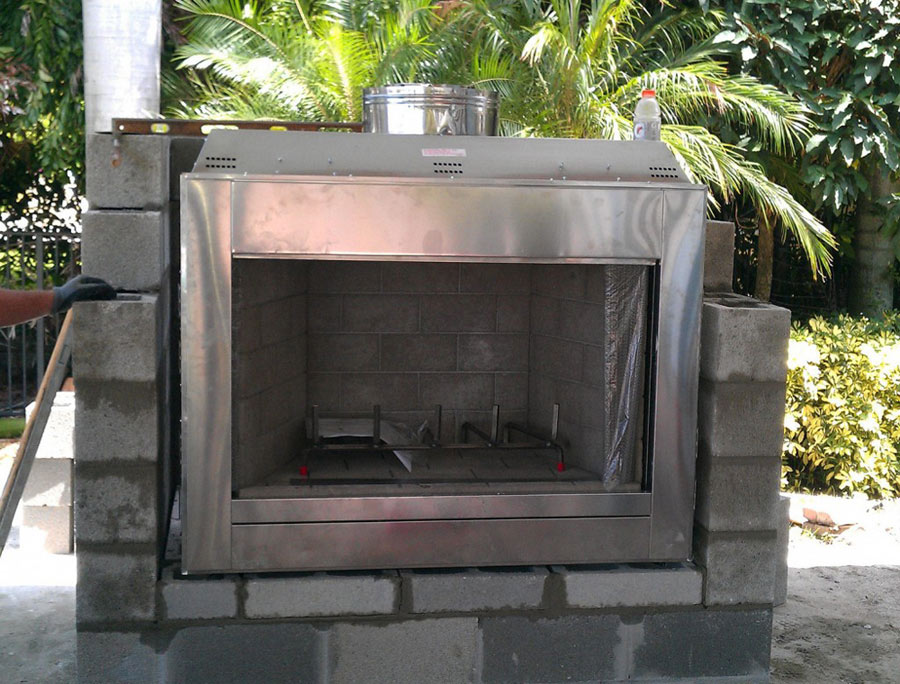
Currently, there are many types of fireplaces. From the dimensions required to work, to the type of fuel they use. Most fire pits have a square base, but you can even go for a round base if you want.
In the first place, you must take note of the available space you have. On average, standard chimneys have dimensions of 52″ wide, 48″ long, and 91″ high. In addition to that, you have to know what other aggregates are planned to be installed, such as storage areas. It is best if you have outdoor fireplace plans to follow.
A solid foundation guarantees success
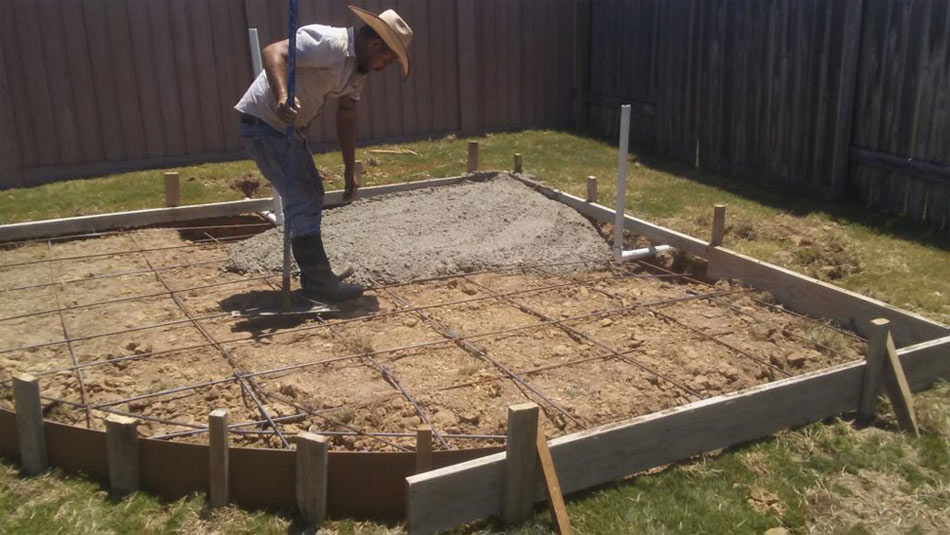
No DIY fire pit can begin without a well-structured foundation. This will be the backbone of the fire pit, and the one that will keep the whole project from falling apart.
If you want to avoid unnecessary headaches, it is best to build on a concrete base. It is the easiest and most resistant material to handle an outdoor fireplace.
However, even concrete jobs require preparation to build an outdoor fireplace. The first thing is to reinforce it with steel sheets so that it does not break with the expansion generated by the heat. If you are going to use a large concrete surface, you will have to section it into different parts to form expansion joints.
If you are creating new concrete bases for your DIY fire pit, you have to first dig a trench, clean everything, level it, and cover it with gravel or rock.
It’s time to pour the concrete for the fire pit

Now is the time to form the trench so that the concrete can be poured. This formwork will not be made on the four sides of the hole, but only on the two longest sides. Its objective is to serve as a guide to be able to level the gravel or concrete that will work as the fire pit base.
Once the base is leveled, flattened, and dry, you can remove the formwork. Put rebar that will be located in the middle of the plate. Now you can finish filling the rest of the trench, which does not matter if it has imperfections on the surface.
Over the area that was prepared and leveled, you will place a base of sand or gravel that will act as a pad for the blocks of the outdoor fireplace. Again, you will need to flatten it out before proceeding to the next step.
Now it only remains to wait for the concrete to cure completely. This should be ready after 2 days, and as time goes on it will become more solid, reaching its highest hardness after 14 days.
How to build an outdoor fireplace using cinder blocks

The time has come to start laying the blocks that will make up the outdoor fireplace. The best material for this exterior construction is cinder blocks. They will be able to withstand the natural elements in an excellent way, in addition to optimally conducting the fire pit heat.
Before building the vertical structure, you have to build a floor with the same blocks. You should start their placement from the center so that you do not have problems in the framing of the sides. You can help yourself in this task using a square.
With the floor ready, you will proceed to build the structure that will enclose the fireplace’s flame. Ideally, this structure should be about four feet tall, but this can vary depending on your taste. You will place the blocks in a locked way so that those on the lower level can support the weight of those on the upper levels. In addition, you will only place a slight amount of adhesive between the blocks, since they will stay on their own with only gravity. Just remember to leave a front opening on the firebox.
By the way, if you do not have cinder blocks, you can always create a stone fireplace. Its resistance will be pretty similar, and a stone fireplace combines better with natural spaces.
No structure is ready without a lintel
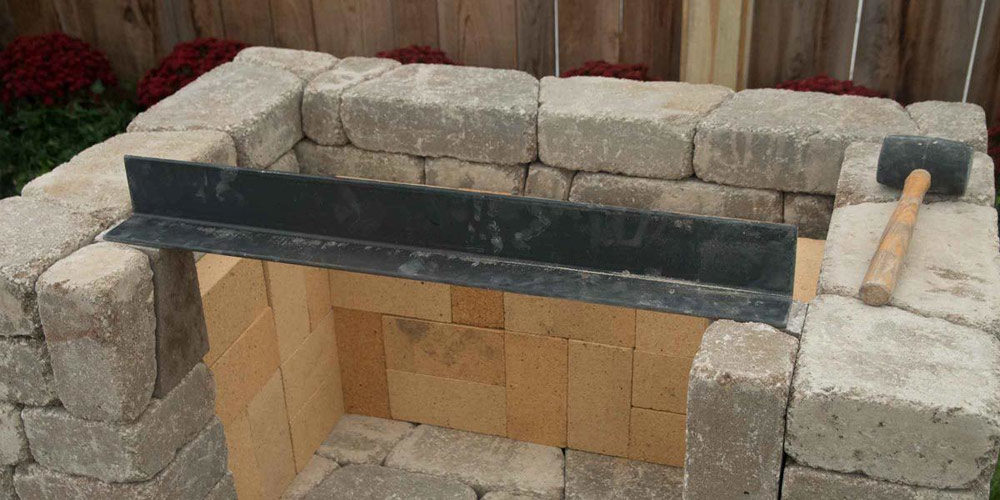
A lintel is a top bar that completes the structure. Windows and doors have a lintel that allows building on the upper part.
For this fireplace, you will use an L-shaped metal profile for the lintel which can rest on the opening that you left when building the structure. Place more cinder blocks over the profile to create a couple of additional levels in the structure.
It’s time to build the firebox

The firebox is the section of the fireplace in charge of keeping the heat inside it and of taking care of the integrity of the cinder blocks. Inside the structure, you will proceed to create another cage, this time with fire bricks that can withstand the heat.
As you already have a previous structure, you only need to follow the firebox’s cinder blocks. Note that the height of the firebox is up to where the lintel begins.
Adhere each block with its corresponding adhesive, be it glue or cement, and let it dry before continuing to the next step.
Channel the smoke with a smoke chamber
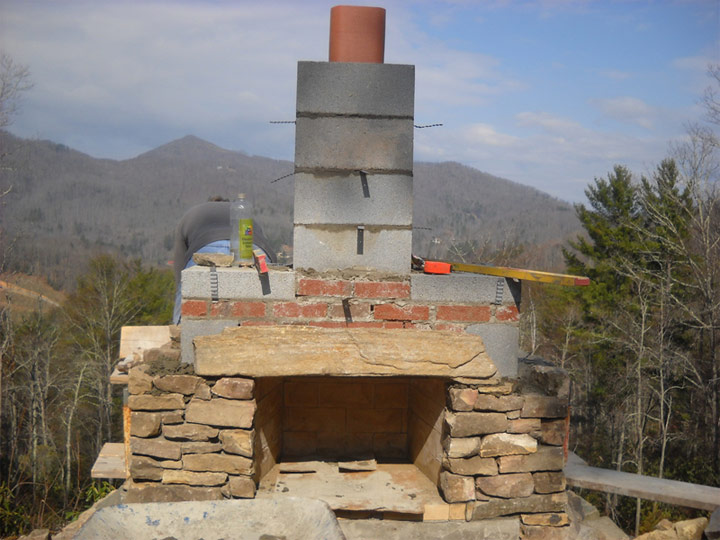
With the firebox blocks firmly in place, the next thing is to create a smoke chamber that can redirect the resulting gases from the chimney. Its design is simple: using again the cinder blocks build three extra levels on the structure that you already have.
However, the first row you will build will need to be offset toward the center by at least 2 inches on the sides and 4 inches on the front (the back is preserved).
Then, the second and third levels will have to be offset each by 2 inches on the sides, but without altering the front area. The result will be a kind of pyramid or arch that will work as a support for the chimney.
It’s time to finish the structure with a chimney
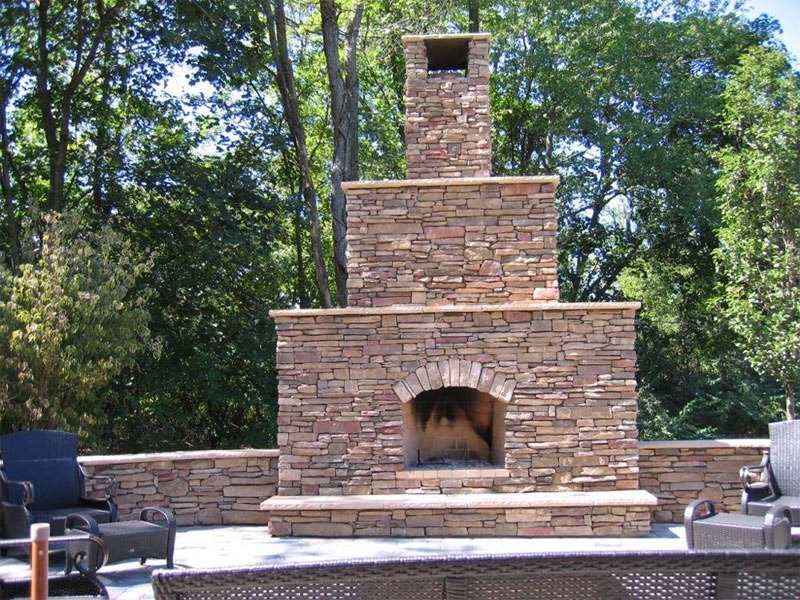
When the entire structure is done, it is time to build the chimney that will release the smoke into the sky. The process is quite simple: you just have to place cinder blocks following the shape of the final level of the smoke chamber. You should always keep everything leveled and square.
The height is free depending on your taste, but remember that you must have some firm base to work on. The use of a scaffold is recommended for this since the stairs can leave you in a bad position for assembly.
Consider that outdoor fireplaces can have cylindrical chimneys as well. The stacking process will be similar. However, for these cases, it is better to have a round base.
You can even get creative and combine different materials for the construction. The chimney could be made of stone to give it more character.
The perfect finish for the DIY outdoor fireplace
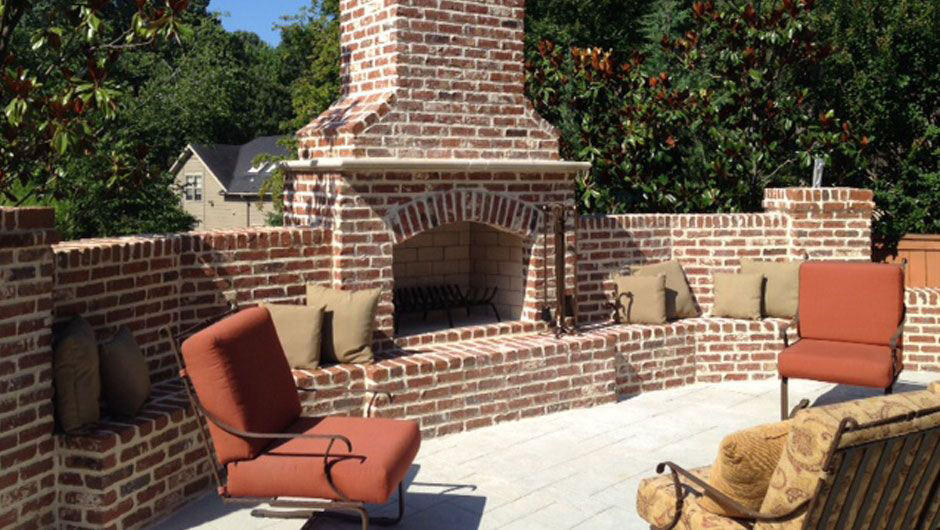
Finally, you must finish the fireplace with a small roof that protects it from the entry of water or other natural elements. This ceiling should be slightly higher than the chimney to leave a couple of openings where the smoke will escape.
Nowadays there are many ways to make the roof for outdoor fireplaces. The easiest is by placing four stones or blocks in the corners of the chimney and then placing a single large piece of concrete on the top. You can also be more creative and install tile roofs.
Now you know how to build an outdoor fireplace
With the last piece on the ceiling, you need to add a few final decorative touches to your DIY fireplace. Now you just have to wait at least 72 hours for the rest of the concrete or glue to finish drying before you can start the first fire.
If you follow these steps, you will be able to create as many outdoor fireplaces as you want. Just remember that a DIY outdoor fireplace could be a challenging job. It is recommended that you always have assistance from another person for heavy tasks.
FAQ On How To Build An Outdoor Fireplace
What permissions do I need before building an outdoor fireplace?
Before you start stacking bricks, it’s crucial to check with your local building authorities. Obtaining the necessary construction permits ensures compliance with safety regulations and local building codes.
This step prevents legal headaches and ensures your fireplace meets community standards for safety and construction.
How do I choose the right location for my outdoor fireplace?
Selecting the right spot involves considering wind patterns, proximity to your home, and safety regulations.
Aim for a location that enhances your outdoor living space while ensuring the smoke doesn’t bother your neighbors or enter your home. Adequate clearance from flammable materials is also paramount.
What building materials should I use?
Your primary concern here should be using heat-resistant materials like fire bricks and fireproof mortar. These materials ensure durability against high temperatures and reduce maintenance needs.
For aesthetics, stones or designed concrete blocks can also be incorporated to suit your outdoor decor.
Does the size of the fireplace impact its efficiency?
Indeed, the size of your outdoor fireplace significantly affects its efficiency. A well-proportioned fireplace will enhance heat distribution and smoke ventilation, ensuring a comfortable and safe environment. Balance the dimensions with the available space and your heating needs.
How do I ensure proper ventilation for my outdoor fireplace?
Proper ventilation systems are essential. Ensure there’s enough chimney height to encourage smoke to ascend away from your seating area.
This setup not only makes the experience more enjoyable but also adheres to fire safety regulations, safeguarding against potential hazards.
What foundation is best for an outdoor fireplace?
A strong, stable foundation is crucial. A concrete base is often recommended because of its durability and ability to bear the weight of the fireplace structure without settling. Make sure it’s level and free from any organic materials to avoid future issues.
How can I incorporate my outdoor fireplace into my landscaping?
Integrate your fireplace seamlessly with your landscaping by choosing materials that complement your outdoor area’s aesthetic.
Consider the overall outdoor living theme, whether it’s modern minimalism or rustic charm. Strategic placement can enhance not just usage but also the visual appeal of your garden or patio design.
What safety features should I include?
Always incorporate a spark guard and ensure there is a safe distance between the fireplace and any potentially flammable materials.
Regular checks and maintenance of the ventilation systems can prevent ash and sparks from becoming a hazard. Understanding and implementing fire safety regulations cannot be overstressed.
How do I maintain my outdoor fireplace?
Regular maintenance includes cleaning out ash and soot buildup, checking for cracks or deterioration, and ensuring the fireplace tools and accessories are in good condition. Seasonal checks, especially after rough weather, will prolong the life and efficiency of your fireplace.
Can I build an outdoor fireplace on an existing patio?
Yes, but evaluate the patio’s structure first. Ensure the existing foundation can support the additional weight of a fireplace.
Sometimes reinforcing the base is necessary, and always adhere to construction permits and guidelines to update any outdoor entertainment area safely and efficiently.
Conclusion
Embarking on the journey of how to build an outdoor fireplace transforms not just your backyard but also the way you engage with your outdoor space. By now, you’ve learned the essentials—from securing the right construction permits to selecting heat-resistant materials and ensuring reliable ventilation systems.
Remember, the key to a successful project lies in meticulous planning and adherence to safety regulations. A well-built fireplace not only stands as a testament to durability but also enhances your outdoor living area, making it the heart of gatherings and a cozy refuge on chilly evenings.
May your new outdoor fireplace bring warmth and joy to many seasons, turning simple moments into memorable experiences under the open sky. Dive into this project with confidence, backed by the insights and guidance explored here. Safe building and happy entertaining!

